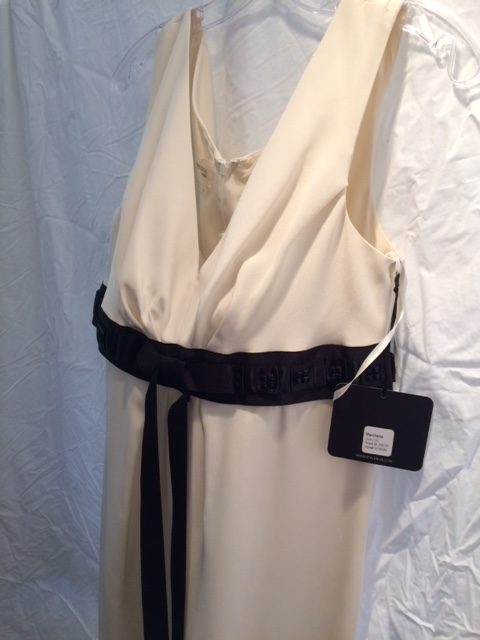Buying used clothes at thrift stores may seem like a smart way to slash your spending — and it is. You ought to get gold stars and stickers for spending $10 on jeans instead of $50.
But with their low prices and expansive inventories, thrift stores can tempt even a well-meaning saver to buy not only those jeans, but also:
- beautiful leather loafers (even though they’re a size 9, and you know in your heart you’re a 9½)
- a hilarious novelty T-shirt for your sister that you’re (pretty sure) she’ll think is funny, too
- bike shorts (because this is the spring you finally get into biking)
Now you’ve blown your budget and have to deal with all this stuff you may or may not use. Gold star revoked.
Instead, we’ll help you become a savvy thrifter who buys inexpensive, high-quality clothes you actually need — and nothing else.
But first, for those new to buying used clothes, here are a few reasons to check out your local thrift stores.
Why buy used?
You help the environment. “Clothing reuse is very important for our planet,” says Margaret Engel, co-author of “ThriftStyle: The Ultimate Bargain Shopper’s Guide to Smart Fashion.” Buying used clothes — and donating your own — keeps them from landfills and conserves the energy needed to manufacture them. So as you thrift, “think of yourself as an environmental warrior,” she says.
You snag deals. Catch the thrifting bug, and you may wonder why you ever paid full price for clothes. Engel, for example, bought a ballgown by the designer Marchesa for $10 on the sale rack of a consignment store. (A bit of Used Clothing 101: Consignment stores resell clothes that are typically more expensive and higher quality than those at huge nonprofit chains, such as Goodwill.)

The $10 Marchesa gown (Photo courtesy of Margaret Engel)
Not in the market for ballgowns? Engel points out that most thrift and consignment stores sell all the basic clothes items you could need and have whole sections of office wear. And, of course, these clothes are all sold at steep discounts from the original price.
You can find high-quality clothes. New clothes can be expensive. Even if you opt for the low prices (and low durability) of “fast fashion” stores like H&M, Forever 21 and Zara, you often get what you pay for. Those suit pants may cost only $40, for example, but they may not fit perfectly or live to see your next interview — when you’ll have to buy new suit pants.
But at used-clothing stores, your money can go further, Engel says. Many consignment stores aim to sell only high-quality garments made to last, at resale prices. You can unearth these gems at thrift stores, too, if you’re up for digging through their wider-ranging selections.
If necessary, you can use the money saved by buying used to get these more valuable items altered. As Engel puts it: “You can buy couture clothing for your budget.”
How to thrift the smart way
Buy what you need, not what you want. You may be tempted to overbuy at thrift stores, Engel says, “because you find unexpected items that you weren’t looking for.” (How are you supposed to pass up those $5 suede cowboy boots?)
Give in to that temptation, and you’ll not only spend more than necessary — you may end up with a bunch of stuff you don’t need. (It turns out 28% of the items in the average person’s closet haven’t been worn in over a year, according to a recent study by the personal styling service The Trunk Club.)
“Shopping takes discipline,” Engel says, “If you go into it in a lazy fashion, you’re going to be broke and have a stuffed closet.”
Before thrifting, she suggests evaluating your closet to determine what clothing items you need — rather than want — to buy. (You probably don’t need suede cowboy boots, right?) Then stick to that list once you’re in the store.
Buy for now, not later. “If you’re stocking up for future possibilities, it always happens that you don’t use it,” Engel says.
So no buying cocktail dresses for a hypothetical wedding or sun hats for an unplanned vacation. Thrift and consignment stores have so much stuff that those items will likely be available when you actually need them, she says.
And avoid buying clothes in smaller sizes, thinking you’ll lose weight and wear them later. “You have to buy for where you are right now,” Engel says.
Buy for yourself, not for others. Resist the urge to buy for friends and family members — even if that jacket is only $10 and (probably) your friend’s size and (you think) her style.
“Everyone’s taste is so personal,” Engel says. “Even if you’re convinced they’ll love it, don’t do it.”
The better choice is taking that friend along with you to the thrift stores. You can keep each other from buying loafers and cowboy boots you’ll never wear.
More From NerdWallet
- Mend Holes in Your Budget With a Little Needle and Thread
- 10 Easy and (Mostly) Painless Ways to Save Money
- Where to Sell Your Clothes Online
The article How to Shop for Used Clothes — and Why You Should originally appeared on NerdWallet.


